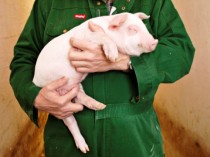We don’t work as other analysts.
- Analysts often move in a straight line from A to B without an eye for the interesting thing that may pop up.
- Communication People and journalists have trouble understanding data and use them.
- And data specialists often find it difficult to see what data can be used for by anyone other than themselves. For them, all data are equally important – or almost.
We combine the best from three Worlds. We look at data with the eyes of a journalist. We analyze data using all kind of methods. And we understand, where results are relevant for others.
Click on the beams below for more information on each type of analysis.
Number Crunching
We analyze data to find the most interesting content, the most interesting tendencies and then also, what seems strange. Normally it is rather simple calculations we use. It is the angle that counts.
Data Analysis
The concept of data analysis can cover nearly everything, but often we discover something new when we interconnect two sets of data from different sources. In the process, we focus on duplicates – or the point may be that the repeated duplicates are missing.
For example we get access to data with business ID’s, but no more information. We then look business ID’s up in a professional register and can now draw on information such as geography, company size, etc.
Or we look at one database on poisoned ground and another with houses for sale and then merge these two datasets to find hidden poison for sale.
Geographical Analysis
All data with an address or a geographic location can be analyzed in this way: How many homes located less than 500 meters from the beach cost less than 100.000 Euro?
How far is the distance between the schools and the nearest candy store? Which names are most popular in each municipality.
Map of all kinds are popular. In order to make maps with the best and worst municipalities you must first make a geographical analysis of data.
Content Analysis
Content analysis systematic counting is well known from media research, but rarely used consciously in journalism and for other areas. Subconsciously it happens often.
When you make scrapers, actually you start with content analysis to define the fields for the final data. When you look on court-cases or other cases you define precisely the fields to be used to categorize each case and later group and count all the cases.
Network Analysis
Network Analysis complements the traditional type of analysis because we do not just look at things that we obviously can measure and weigh, age, income or addresses, but suddenly we can also study the inner dynamics of groups.
This kind of analysis is also used to show who, for example, dominate twitter stream during meetings.
Statistical Analysis
Statistical analyzes are typically used when you only get data from a sample of a population. This way you can make firm conclusions.
Another frequently used analysis is to measure the strength of the relationship between two variables. To what extent is it, for example, the sizes, which explains the schools’ average grades?
Tommy Kaas and Nils Mulvad have analyzed various data for 20 years. We can prioritize, analyze, conclude and see stories in data. Others can then understand the conclusions and use them in practice.
We ensure valid conclusions.




